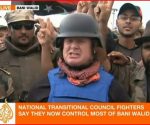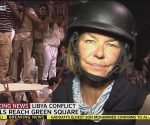Archive: The Panjwai district eyewitness accounts – including those that the corporate-media won’t countenance
First published at Luikkerland, 14th March, 2012
In my previous article, I discussed how the existence of certain eyewitness accounts of the shootings in Panjwai district, and in particular, how RT gave them significance in its reportage of the incident, somewhat broke the stranglehold of the official narrative that was being sustained by British corporate-media.
Since then, I was very interested to see that a Telegraph journalist, one Barney Henderson, who wrote yesterday’s live coverage of any and all events that were loosely to do with the shootings, had a bit of a hissy fit about RT’s penetration through the corporate-media’s news blockade. This is what he wrote:
RT , Russia’s state funded broadcaster and a constant critic of [the] West’s intervention in Afghanistan, is doing its best to push the theory that a number of US soldiers were involved in the killing.
He then quotes from the RT article (that I link to below) – specifically from parts in which Afghani eyewitnesses to the incident talk about the involvement of more than one US soldier.
I was amazed by Henderson’s performance. His was an obvious psychological operation where the reader is invited to notice that the Russian state funds RT, and therefore RT must be biased against the West according to some agenda dictated by Moscow. Then the reader is invited to believe that it is RT itself that is finding the sources of these quotes to “push” that agenda. I find the chutzpah incredible. The Telegraph isn’t even state funded, and it pushes the agenda of the British Government (because its leadership is bought off).
In addition, the material that RT used was originally gathered by the likes of Reuters and AFP, and the Daily Mail even used it in its coverage. In fact, the Mail was doing the same thing as Henderson, and accommodating the alternative narrative in the official one by framing it as coming from, or associated with an unreliable or distasteful source (the Mail mentioned the possibility of more than one US assailant in the same stroke of a pen as it mentioned the Taliban).
Henderson’s behaviour should give us a hard lesson. He sees RT’s perfectly good lateral approach, its openness to a story that no one else will consider, and its level of questioning that should be natural to any journalist, as a challenge to what he is part of; he is revealing that he is the enemy of anyone who considers all the evidence. In fact, this is what you can say about any corporate-media journalist: they are the enemies of all the evidence and they are paid to be that way.
There are no corporate-media whores around here, so in this article I want to look at the eyewitness evidence that has appeared in the press without any presumption of its worthlessness because it doesn’t fit a certain narrative. At the same time, because I like to analyse information and make sense of it so that it forms a paradigm by which I can understand the world, I will be coming to a few conclusions about what the evidence is suggesting to me.
The Mirror newspaper has some very detailed information about the sequence of events in the case under scrutiny. One can’t help but wonder how it came into their hands; the writer who presents it to his lucky readership merely mentions “sources”. I am going to use the Mirror account as a backbone for analysis, and intersperse it with information gleaned from elsewhere that corroborates or contradicts it. Then to provide a tail to that backbone, I will deal with some other issues engendered by eyewitness accounts.
The Mirror story begins as follows:
The US Army Sergeant… put on Afghan robes and hid weapons underneath his clothing before heading off on his killing mission, sources said. [He]… also had on night-vision goggles, the kind used by special forces, as he climbed a perimeter barrier at his combat base. Underneath the robes the killer… wore his International Security Assistance Force fatigues.
In a story published today, the Associated Press reported how an Afghani official claimed that he had seen surveillance video from the base which showed the mass-murder suspect returning from his deadly outing. Although the soldier was in US Army uniform, his weapon was wrapped in a “traditional Afghan shawl”.
From another article elsewhere, I noticed that the suspect was supposedly bearded, as well as being dressed in civilian clothes; whether this is a man undercover, or beard-wearing is now tolerated in the US Army, it is not entirely clear. There is general agreement that the suspect was wearing night vision goggles. However, some reports state that he left his base by one of the camp gates. This is from the Australian piece just linked to:
Armed with his weapon and spare ammunition [the suspect] emerged from his sleeping quarters and approached the lone Afghan soldier standing guard at Camp Belambay in Kandahar province. He walked past him into the night without saying a word to his colleague.
This idea that the suspect strolled out of the base is echoed in other places. The BBC reports the following:
An Afghan guard at the Nato base told the BBC that the soldier left the base twice. He returned at 00:30 local time (20:00 GMT) after the first trip out and was out between 02:00 and 04:00 for the second trip.
Generally, most of the reportage agrees that the soldier left the base to do all of his killing at 3am.
The Mirror’s account continues:
First the gunman left the base in Panjwai district and walked about one mile to Balandi [another name for Najeeban?] village. He then removed his disguise before roaming from house to house, firing on those inside at 3am. He smashed his way into three homes and set some of the bodies on fire after he had killed them. Eleven of the 12 civilians gunned down in Balandi were from the same family. The remaining victim was a neighbour.
I have seen an account of the gunman going from house to house trying door handles to see if the doors were unlocked and would open, although it is not known which village this story comes from. I think that the Mirror makes a mistake as it seems to be placing all three broken-into homes in Balandi/Najeeban; the other reportage talks about three homes in total throughout the entire attack and across two (or even three) villages and hamlets. (Reports vary, but they all claim that the attack on eleven people happened in Nejeeban or Balandi. I am going to treat Balandi and Najeeban in the sense that they are both not the village of Alkozai – therefore, I am going to treat them as the same place).
The family of eleven that were butchered belonged to a grandfather, Haji Samad (Samad Khan in some accounts). He had survived because he had been away. He told AFP news agency that “they [Americans] poured chemicals over their dead bodies and burned them.”
According to the Wikipedia entry about the incident, it seems that 2 sets of 4 children (out of the 9 child victims in total) were related, which means that they must have been part of this eleven-strong family group. We also know that at least 3 children were shot with a single bullet to the head. This Najeeban house is the only place that this could have happened. Please also note that the Wikipedia entry says that the victims who were burned also had knife wounds. Such a weapon is used when an assailant doesn’t want the alarm raised. I am surmising that this family was assassinated silently as it slept.
The Mirror continues:
From Balandi, the gunman walked a mile to the village of Alkozai, close to the American military base.
Yesterday an Afghan man recalled the terrifying scene in his home as the lone US soldier moved stealthily through it looking for more victims during his murderous spree. He had already killed four people in a house nearby and then moved to the house of Mohammad Zahir, 28, where he shot his father in the leg.
(The Mirror seems to be implying that Mohammad Zahir family’s house was located in Alkozai because the 4 victims mentioned in its account were killed in that village. This might not be the case for there is no way of knowing the real sequence of events from any information available to us; the Mirror has already summarised three attack-wide events seemingly into one village. Re-examine the previous extract from the Mirror’s story which says that “eleven of the 12 civilians gunned down in Balandi were from the same family. The remaining victim was a neighbour”. It is anyone’s guess what the word “neighbour” means in an Afghanistan context. Moreover, the evidence from the eyewitness accounts in Alkozai suggest that the gunman’s modus operandi in that town had changed from Najeeban, and this might enable the placing of eyewitnesses such as Zahir. I’ll explain this shortly). The Mirror article continues:
Zahir… said: “I heard a gunshot. When I came out of my room, somebody had entered our house. He was in a Nato forces uniform. I didn’t see his face because it was dark.”
Zahir said he quickly went into another room in the house, where the family’s animals were penned. He said: “After that, I saw him moving to different areas of the house, like he was searching for people.” His father, unarmed, then took a few steps out of his bedroom, Zahir recalled.
“He was not holding anything, not even a cup of tea,” Zahir said. “The soldier was on his knees when he shot my father. My mother was pulling my father into the room? I put a cloth on his wound.”
After the gunman left, Zahir said he heard gunshots near the house again. He stayed in hiding for a few minutes to make sure that the gunman was gone.
The Daily Mail also carried a quote from Mohammed Zahir, who told of how the gunman “was walking around taking up positions in the house – in two or three places like he was searching. He was on his knees when he shot my father in the thigh.”
Now let’s look at the story of Jan Agha, who was family with the four people murdered in Alkozai. The BBC reported the following:
Another eyewitness, 20-year-old Jan Agha, told Reuters he had been woken by gunfire along with his father, who peeped nervously outside through a curtain. Suddenly more shots were fired and his father fell dead, hit in the throat and face. Also killed were Mr Agha’s mother, brother and sister.
The young man said he had survived by lying on the floor, pretending to be dead.
RT also had this information:
Twenty-year-old Jan Agha says the gunfire shook him out of bed. He was in the epicenter of the horrible shooting, witnessing his father shot as the latter peered out of a window to see what was going on.
The Americans stayed in our house for a while. I was very scared, the young man told reporters.
Lying on a floor, Agha says, he pretended to be dead.
He added that his brother was shot in his head and chest. His sister was killed as well. My mother was shot in her eye and her face. She was unrecognizable, he said.
The impression one gets when reading the two accounts of the same witness story is the unified sense of lots of gunfire being let off outside the civilian residences – which provokes curiosity in the inhabitants – and which is then aimed into Jan Agha’s house as if in answer to his father’s temerity in looking out of the window. The idea of external and uncontrolled weapons fire is also conjured in a separate witness statement, as is the presence of more than one American – which Jan Agha clearly talked about. This other witness is called Agha Lala, and his/her report is to be read in many articles; the following is from the Daily Mail:
Neighbors said they had awoken to crackling gunfire from American soldiers, who they described as laughing and drunk.
“They were all drunk and shooting all over the place,” said neighbor Agha Lala, who visited one of the homes where killings took place.
“Their (the victims’) bodies were riddled with bullets.”
I think that Agha Lala could even be related to Jan Agha. (I had the idea after noticing that the man who is named Haji Samad in some versions is the same man as Samad Khan in other accounts). Whenever Agha Lala’s statement appears in the media, it is out of context – as are all the other stories about multiple gunfire. We don’t know which village the witnesses are linking the event to. However, because family would naturally live close together, the name of Agha could place repeated gunfire from many weapons to Alkozai.
There is another witness source that tells of a gang of Americans breaking into a house to shoot the family therein, and it comes via Hamid Karzai. Apparently, he spoke on the phone to a 15-year-old survivor named Rafiullah. Rafiullah, who had been shot in the leg, told Karzai that “soldiers” broke into his house, woke up his family and began shooting them. One infers from all the reports that all the deaths occurred at three different houses, but no more than three in all. In that case, Rafiullah’s must be the third household where there was the final fatality of the 16, but it is not clear where the house is located.
It would be very useful to know where Rafiullah’s home was because it might prove or disprove something that the evidence is suggesting. In Alkozai the killer may have been a different person using a different method to kill. Previously, in Najeeban, the mass-muder suspect may have been a quiet assassin who sneaked through houses to take up firing postures as per his house-clearing training (taught to all infantry). In Alkozai, it seems he was offloading ordnance from the street, and then coming into Jan Agha’s house to kill the rest of his family after the father had been shot dead.
However, when you factor in the stories that mention Americans in the plural, then, if it is true, what it seems to suggest is that a separate gang of killers were in Alkozai and were working in a different way than the lone gunman who had been so efficient in Najeeban.
Finally, to wrap up the sequence of events and to add the tail to the Mirror’s tale, the aforementioned surveillance tape supposedly witnessed by an Afghan official shows – according to that official – a soldier in a US uniform approaching the south gate of his forward operating base. The soldier then removes a shawl that is covering his weapon, and lays the latter on the ground before he raises his arms in surrender. Please note, that the official was not shown video of the sniper leaving the base.
Additional eyewitness statements talk about helicopters active at 2am which gave those people who heard them an impression that they were working in support of an operation. There are also reports about helicopters flying in the area, and of gunfire from midnight. However, I don’t think these reports are significant because it might not be that unusual for choppers to be airborne at all times of the day and night in some parts of Afghanistan. By all accounts, the distances were close enough together for any party intent on murdering to cover the ground. The early gunfire might make sense if a gunman really did make two trips – as the Afghan camp guard related – but I just don’t believe that he could get away with walking out of the camp gates dressed in Afghan clothes and possibly carrying a jerrycan of highly combustible liquid with which to burn the bodies of his victims. In fact, one of the big questions that any investigation will have to ask is where did the suspect get “chemicals”, and how did he transport them?
What I have done in this article is just have a good look at the evidence that is available in not too remote places on the internet, and step as logically through it as I could. In terms of what conclusion I could make from this study, I’d have to say that to me it could be possible that the Kandahar killings were designed as a plan to cause the greatest amount of grievance possible.
When they reacted to the incident, the people who spoke for the Taliban seemed incredibly upset about the fact that bodies had been burnt, and called it an insult against the victims’ Islamic belief. So, if we think of cremation in the same terms of burying a body in pig fat, then we could say that the household of eleven were burned to deliberately cause repulsion in a population of Muslims. Eight of those burned bodies were children, and children are also deliberately targeted when a killer intends to create the largest possible amount of disgust and horror. I think that the person who shot Mohammed Zahir’s father in the leg could have been the same one, or was trying to complete the same kind of mission, as the soldier who killed the family of eleven. I think that in both cases, a calm, collected killer could have been looking to kill children. He wasn’t trying to kill indiscriminately as if a “rage” had overtaken him, or else he would have shot Mohammad Zahir’s father dead.
To me the evidence could suggest an operation in which one or two special operatives went in silently and without attracting any attention to perform the chief act of barbarism. It is quite possible that a different team let off a very public display of gunfire to get the locals to talk about drunken Americans – this part would be a psychological feint intended to give the people who deal with the press something to vehemently deny, and to make eyewitnesses look unreliable and slightly silly. To top it all off, the evidence could also suggest that the operation had a patsy who, if the usual pattern had been deployed, would have been hypnotised or drugged, or in some way or another manipulated so that he could be filmed “giving himself up”.
In the next article in this series, I will examine the possibility of the staff sergeant from Joint Base Lewis-McChord as that very patsy.
Update, 15th March:
A withering article at a site called Veterans Today points out that the only way the staff sergeant could possibly leave a base through a set of gates would have been if he was accompanied by another, and in a vehicle (which would solve the jerrycan mystery). Also, the gate security would have received authorisation for the missions. However, the writer of the article in the Australian (linked to above) thinks that this particular base is not the kind that has normal security – not with special forces slipping in and out all day.
The article cited CNN, which offered new information and contradicted the story about the suspect returning to the base to surrender. Instead it says a patrol was sent out, which “met him as he returned and took him into custody. He said nothing, and it was unclear whether they knew what had happened”.
CNN interviewed a member of the provincial council by the name of Haji Agha Lali, not necessarily the same person as Agha Lala.


















